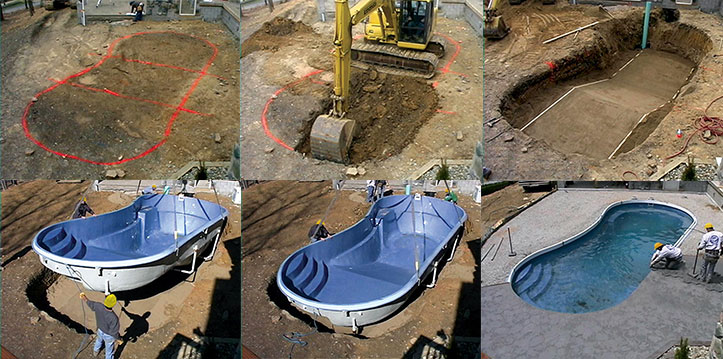There are a lot of options when it comes to covering your swimming pool. Each cover option for your pool usually has at least one specific use for it. Some covers are simply designed to cover the water during the non-swimming season; and other pool covers such as bubble covers, seek to keep the heat in the swimming pool during its unused hours. Some of these covers do their intended jobs ok; and yet others are better than advertised. Which is the safest pool cover? That would really come down to just three types of covers, the mesh pin down safety cover, the solid pin down safety cover, and the automatic pool cover.
So which one is better?
There is a lot of room for debate here and a question if you can really even compare the three because of their different uses. Each one is best for a slightly different situation; automatic pool covers are designed for year round use and pin down mesh/solid safety covers are designed to be put over your pool when it is not being used for a long period of time such as the winter months. So in a way you are comparing apples and oranges. Not to mention, they each are an excellent safety device when covering the swimming pool.
So what are these covers and how does each cover work? Maybe looking at this will help decide the debate between the three as to which is the safest and best when covering your backyard swimming pool.
Good
A solid pin down safety cover is a certified swimming pool safety cover because when it rests on the water it is supported very well by the water and its pins/anchors and is almost impossible to pull in the pool.
Why is it called a pin down cover? In order to be an approved safety cover, the cover must have a firm anchoring system to support it. A solid pin down safety cover accomplishes this by drilling several strategically placed brass pins (or anchors as some call them) into the surrounding pool walk deck. Once the pins are in place, the cover is then put on the pool by lining up each grommet with its matching strategically placed pin to anchor it. The pins are usually placed 1 _ – 2 feet from the edge of the pool. The cover, when placed on the pins has enough excess material to not be taut when it is on; it is designed to sag into the water with about 85% of the solid cover fabric resting on the water to give it strength.
Because it takes a long time to put on and take off the pool, this type of pool cover is impractical for regular use. Also, because of the sagging it can cause a safety issue in its own right because of standing water collecting on the top of the pool cover; a solid pin-down cover owner must make sure only minimal amounts of water remain on the cover by draining it periodically.
Better
A mesh pin down safety cover is a certified swimming pool safety cover because it uses spring tension to keep it supported very well and is almost impossible to pull in the pool.
A mesh pin down safety cover also accomplishes this by drilling several strategically placed brass pins (or anchors as some call them) into the surrounding pool walk deck. Once the pins are in place, the cover is then put on the pool by lining up its strategically placed straps (which are equipped with special spring loaded hooks on the ends) with its matching strategically placed pin to anchor it. It differs from the solid pin down cover in that it does not sag or use the water for support, but stays at the same level of the pool deck because of the extreme amount of tension on it created by the springs on the straps.
A major advantage of this cover is since it is mesh the water passes through it and it does not have to be drained. Because it takes a long time to put on and take off the pool, this type of pool cover is impractical for regular use. Another drawback is that the spring tension is more easily punctured than a solid cover and is more susceptible to things such as cigarette burns and horseplay.
Best
An automatic pool cover with solid fabric material is a certified swimming pool safety cover because when it rests on the water it is supported very well and almost impossible to pull in the pool.
It works by having its cover fabric securely fastened to support tubing at both ends and fastened to strong metal tracks on each side. When covering the swimming pool, it forms an ‘isolation barrier’ which prevents accidental entry into the pool on all sides. The cover, when placed over the pool has enough excess material to not be taut when it is on; it is designed to sag into the water with about 85% of the solid cover fabric resting on the water to give it strength.
An automatic pool cover is an extremely easy to use device because it rolls on an off the pool by simply activating an electric switch; because of this it makes the cover practical for daily use which no other safety cover can boast. It too, because of the cover sagging, can cause a safety issue because of standing water collecting on the top of pool cover. An automatic pool cover owner must make sure only minimal amounts of water remain on the cover by draining it periodically.
Essentially there is no bad choice here because all three are excellent safety devices, but because of its ease of use, there is no doubt that the automatic pool cover is the best of them all.






